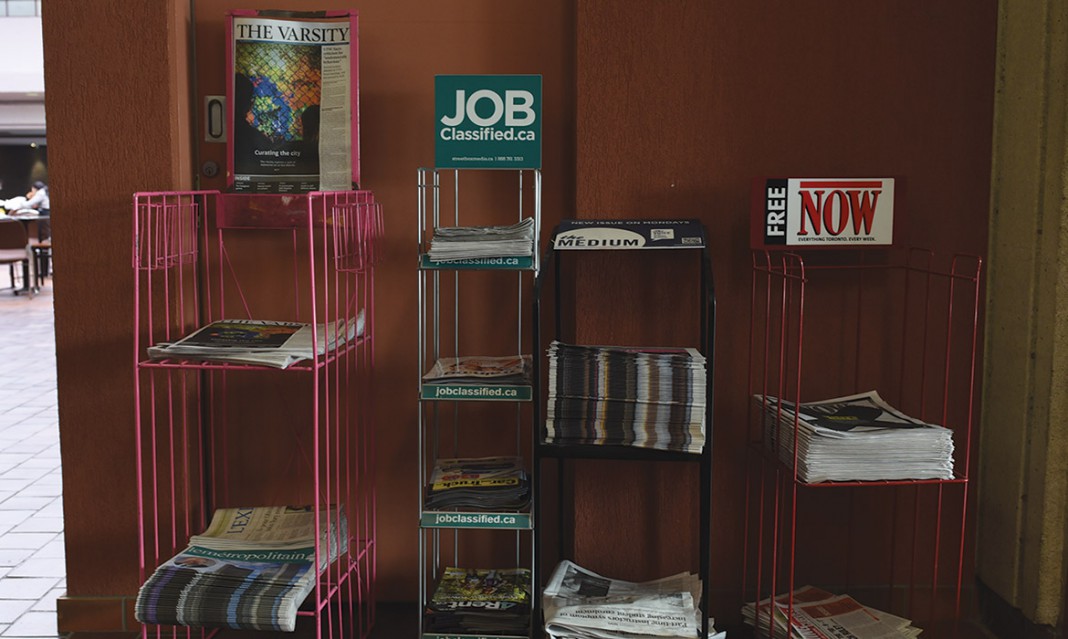Canadian student newspapers have had a rough time financially for the past year and half in the face of declining ad revenue and the sudden bankruptcy of a major national advertising supplier.
Campus Plus (C+) was an advertising subsidiary owned by Canadian University Press, a non-profit cooperative of newspapers at postsecondary campuses across the country.
C+ declared bankruptcy in June 2013 as a result of “declining sales caused by a poor economy and a general decline of advertising spending in the industry,” stated MNP Ltd., the trustee appointed to administer the bankruptcy, in its preliminary report.
In an email to member papers in March 2013, CUP president Sam Brooks, who was also CEO of C+, said that C+ was closing down because it had faced losses over three consecutive years.
However, other factors also played a part. “Although our initial intent was to restructure Campus Plus and work towards a place of profitability, the company is too fractured as a result of mismanagement for this to be possible. Downsizing and preparing to close operations is our only option,” Brooks added.
The Queen’s Journal was one of over 50 postsecondary newspapers to have had its national advertising revenue withheld for over a year following the bankruptcy.
The revenue that C+ owed the Queen’s Journal—listed at almost $30,000 on the final dividend sheet—was one of the highest amounts among the papers affected by the bankruptcy. The Varsity had the highest claim at over $50,000.
Although the bankruptcy was declared last year, newspapers did not receive their dividends until this June, with amounts equalling 85% of their claims. As a result, many newspapers had to operate under much smaller budgets.
Alexander Leger, the business manager for Carleton’s student newspaper, the Charlatan, at the time of C+’s bankruptcy, said the loss of ad revenue forced the Charlatan to make “substantial pay cuts” last year.
“I’ve been working unpaid until we have a decent revenue stream again,” he told The Medium last spring.
Leger was also elected an inspector for the bankruptcy.
“Most other newspapers I’ve spoken to have also had to make cutbacks and retool their advertising,” he said, specifying the publications at UBC, McGill, York, and Queen’s. “Another consequence is that larger advertising companies no longer trust the market and have decreased their ad campaigns targeted at student newspapers.”
Similarly, Dayne Moyer, the business manager of the University of Winnipeg’s The Uniter, is “addressing financial strains” and has not enjoyed nearly the national advertising revenue it did two years ago and earlier.
The Uniter is not alone. Last year, a number of campus publications across Canada announced reductions to the number of their print editions. Among those was Queen’s Journal, whose co-editor-in-chief, Alison Shouldice, said part of the problem was a decline in the advertising market, reported Maclean’s in August of last year.
Following the closure of C+, the decades-old Campus Network, along with the brand-new FREE Media, became two of the main major advertising providers for Canadian student papers.
Despite the challenges that student newspapers continue to face, however, business managers are optimistic that campus newspapers can still flourish.
“I would honestly say that under proper guidance and with responsible leadership, a university paper has the potential to thrive in today’s climate,” said Moyer. ”Especially since it is subsidized by student fees.”
This article is the first in what The Medium plans to be an ongoing series.



